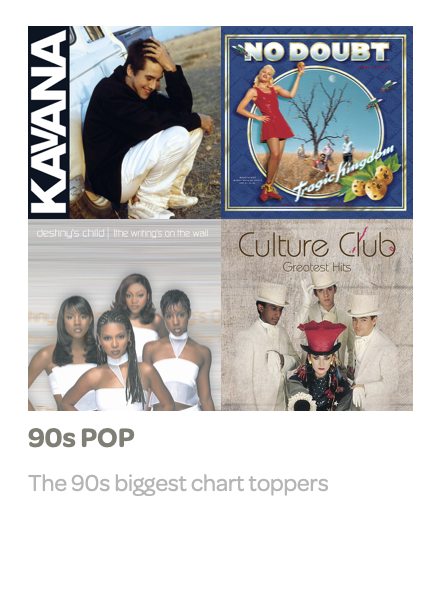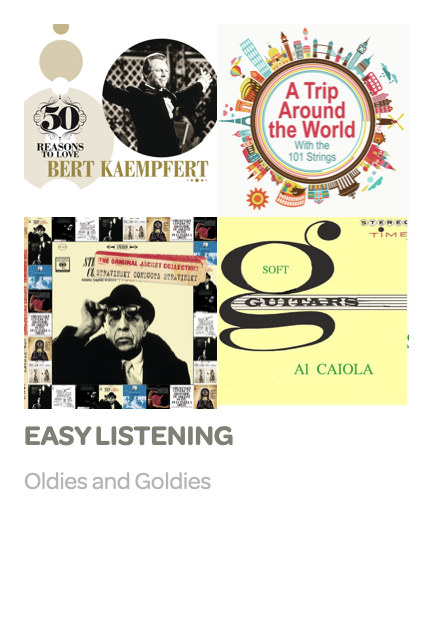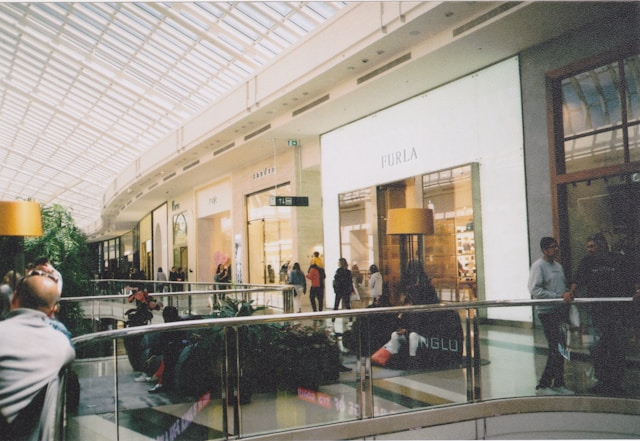Music is one of the most underrated tools in retail. The right playlist doesn’t just fill the silence, it shapes how customers feel, how long they stay, and in some cases, what they buy.
Faster tracks can push shoppers along more quickly, while slower music encourages them to browse. In fact, research on back-to-school music in retail shows how soundtrack choices can shape shopper mood and purchasing behavior.
For retailers, this means music is more than background noise, it’s part of the store’s design. A thoughtfully chosen playlist can encourage browsing, build brand identity, and keep energy levels where you want them.
So what are the best playlists for retail store background music? Here’s a quick list before we dive into details:
- Pop
- 90s–10s Adult Contemporary
- Country
- 70s–80s Rock
- 90s Pop
- Chill Beats
- Ed Sheeran – Artist Radio
- Smooth Jazz Instrumentals
- Frank Sinatra – Artist Radio
- Easy Listening
Now let’s explore why each of these works so well in a retail environment, the kinds of stores that benefit most, and how to use them to create a shopping experience that feels intentional.
1. Pop

Pop is a universal crowd-pleaser. With catchy hooks, upbeat rhythms, and wide generational appeal, it creates an energetic, approachable environment. Whether you’re hearing Taylor Swift’s latest single, a Bruno Mars hit, or Dua Lipa’s dance-pop anthems, pop brings familiarity that draws people in.
Retailers use pop playlists to keep energy high in busy spaces: fashion boutiques, electronics shops, or lifestyle chains. For stores targeting younger audiences, current chart-toppers give the impression of being modern and in tune with trends. For broader audiences, mainstream hits offer inclusivity that makes almost every shopper feel welcome.
Pop works best when you want customers to feel upbeat and engaged. Think of it as the “default” playlist for fast-paced retail environments where browsing should feel fun and lively.
2. 90s–10s Adult Contemporary

Adult contemporary bridges the gap between relaxed and energizing. This playlist spans radio-friendly hits from the 1990s through the early 2010s, songs that are polished but not overwhelming. Artists like Sheryl Crow, Coldplay, John Mayer, and Kelly Clarkson fall into this category.
The mood is balanced: mid-tempo enough to keep shoppers alert, but mellow enough to avoid fatigue. It’s especially effective in spaces where you want people to linger, such as bookstores, home décor outlets, and lifestyle retailers. Customers browsing furniture or home goods often appreciate music that feels familiar without being distracting.
Another advantage of adult contemporary is cross-generational appeal. Shoppers in their 30s, 40s, and 50s often grew up with these tracks, while younger customers still recognize many of them from streaming platforms or nostalgic revivals.
3. Country

Country music has a storytelling quality that feels warm, relatable, and inviting. From the classic sound of Garth Brooks to the modern polish of Kacey Musgraves, country resonates with themes of home, love, and everyday life.
Retail environments that emphasize hospitality or rustic charm, such as outdoor gear shops, Western apparel stores, or lifestyle boutiques, benefit from country playlists. The genre aligns naturally with American cultural identity, especially in regions where country is part of everyday life.
The upbeat side of country encourages energy during peak shopping hours, while softer acoustic tracks create an intimate backdrop for slower browsing. It’s a genre that can feel personal, which is why it works so well in spaces where community and connection matter.
4. 70s–80s Rock

Classic rock is timeless. With bands like Fleetwood Mac, Journey, Queen, and The Eagles, this playlist taps into nostalgia while keeping the vibe energetic. The sound is bold, familiar, and often singable, which instantly lifts the mood of a store.
Retailers use 70s–80s rock to give character to their spaces. Record shops, vintage clothing stores, and sporting goods retailers are natural fits, but the playlist also works in general retail when you want to stand out from cookie-cutter background music.
Rock energizes without feeling disposable. It appeals to older shoppers who grew up with it and younger customers who appreciate its resurgence in pop culture. By blending energy with heritage, classic rock tells customers your store has personality and staying power.
5. 90s Pop

Few eras of music carry as much nostalgia as the 1990s. Playlists with Britney Spears, Backstreet Boys, Destiny’s Child, and NSYNC bring back memories for millennials, while Gen Z customers enjoy the retro cool factor.
In retail, 90s pop works especially well for fashion and lifestyle brands targeting younger demographics. It creates a fun, throwback atmosphere that invites customers to browse with a smile. Paired with modern décor or products, the contrast feels playful and intentional.
Nostalgia has purchasing power. When shoppers feel a connection to the music, they often stay longer and browse more. A 90s pop playlist taps into this emotional layer while keeping the vibe light and upbeat.
6. Chill Beats

Not every retail environment thrives on high energy. Chill beats, lo-fi tracks, and mellow electronica create a calm, modern atmosphere. With steady rhythms and subtle melodies, they add ambiance without competing for attention.
Coffee shops, tech retailers, and minimalist lifestyle stores often lean on chill beats to reinforce brand identity. Customers in these environments want space to think, test, and explore without distraction.
The strength of this playlist is flexibility. It’s easy on the ears, blends into the background, and works well across demographics. For retailers aiming for a sleek, modern aesthetic, chill beats provide the perfect soundtrack.
7. Ed Sheeran – Artist Radio
Ed Sheeran’s music blends acoustic warmth with mainstream appeal, making him one of the most versatile artists for retail playlists. His catalog ranges from heartfelt ballads like “Thinking Out Loud” to upbeat tracks like “Shape of You.”
“Artist Radio” doesn’t consist solely of one performer. An Ed Sheeran station will include many of his hits alongside tracks from similar artists, such as James Bay, Shawn Mendes, or Passenger. This variety keeps the playlist engaging and prevents the repetitiveness that can occur with a single-artist loop.
Retailers choose this type of playlist for spaces where they want both familiarity and subtlety. Bookstores, apparel shops, and gift shops are ideal matches. The mix of recognizable songs provides comfort, while the acoustic and melodic qualities make it easy to keep in the background without overwhelming the space.
Because the station spans multiple moods, it also adapts well to different times of day. Softer ballads suit mornings or quieter evenings, while upbeat tracks keep energy up during peak shopping periods.
8. Smooth Jazz Instrumentals

Smooth jazz brings sophistication without requiring attention. Because it’s mostly instrumental, it fills silence without interrupting conversation or distracting from products. The tone is refined, relaxing, and professional.
High-end retail environments such as jewelry stores, luxury boutiques, or upscale homeware shops often use smooth jazz to reinforce their brand image. It subtly signals quality and exclusivity, encouraging customers to slow down and take their time.
This playlist is particularly effective when you want customers to focus on detail. Without lyrics, shoppers can stay engaged with products while still enjoying an inviting ambiance.
9. Frank Sinatra – Artist Radio

Frank Sinatra’s music is synonymous with elegance. His timeless voice and big-band arrangements create a refined, classic atmosphere that few other artists can match.
On most streaming platforms, “Artist Radio” playlists don’t consist solely of the artist. A Sinatra station will typically blend his signature tracks with songs from other crooners and big-band performers of the same era, such as Dean Martin, Tony Bennett, or Nat King Cole. This mix keeps the playlist fresh while staying firmly within the genre’s sophisticated mood.
Retailers turn to Sinatra’s station when they want to make shopping feel like an experience. Wine shops, luxury menswear boutiques, and heritage brands often use this style of music to emphasize tradition and sophistication. Pairing Sinatra’s timeless sound with warm lighting and attentive service can transform even simple purchases into memorable moments.
Sinatra also bridges generations; older customers feel nostalgic, while younger shoppers often appreciate the retro charm. It’s a playlist that communicates heritage, style, and lasting quality.
10. Easy Listening

Easy listening is a versatile option that works almost anywhere. With artists like Norah Jones, Michael Bublé, and Jack Johnson, the mood is mellow, melodic, and broadly appealing.
This playlist is especially useful in supermarkets, pharmacies, and general merchandise stores where the goal is to maintain a comfortable, neutral environment. It creates ambiance without taking risks, ensuring most customers feel at ease.
Easy listening also transitions well throughout the day. It can support busier morning hours with mid-tempo tracks and soften into calmer selections as evenings approach.
How to Choose the Right Playlist for Your Store
Music should be intentional, not an afterthought. Here are some practical tips for choosing the right playlist:
- Match your brand identity: A rustic lifestyle shop might lean on country, while a sleek fashion retailer might use chill beats.
- Think about demographics: Who is your core customer? Younger shoppers may connect with 90s pop or chart hits, while older customers might respond better to adult contemporary or classic rock.
- Control the pace: Upbeat playlists encourage quicker movement through the store, while slower tracks invite lingering and exploration.
- Daypart your music: Morning hours might call for softer, easy listening or jazz, while afternoons and evenings can handle pop or rock.
- Stay consistent: Mixing genres is fine, but aim for a consistent mood. Sudden shifts from country to EDM, for example, can feel jarring.
The playlist you choose is part of the overall customer experience; just like lighting, layout, and décor.
Putting Playlists into Practice
Music in retail is more than background, it’s a tool for shaping the customer journey. The best playlists align with brand identity, appeal to your target audience, and set the right tone for the shopping experience.
From pop hits that energize to smooth jazz that refines, the choices above represent some of the strongest options for creating an atmosphere that keeps customers engaged and comfortable.
By making music part of your strategy, you’re not just filling the silence, you’re designing the soundtrack of your store.
FAQs
What is the best type of music for retail stores?
It depends on your brand and audience. Pop and easy listening are versatile choices for most environments, but niche retailers may benefit from more specific playlists like jazz, country, or classic rock.
Does music really affect customer behavior?
Yes. Studies show that tempo and genre can influence shopping pace, mood, and even purchase decisions. For example, slower music can encourage customers to browse longer, while faster beats may keep energy high during peak hours.
Should playlists change throughout the day?
Ideally, yes. Varying playlists by time of day, upbeat during busy hours, softer in the evenings, keeps the experience fresh and supports the natural rhythm of customer flow.
Can I just use Spotify or YouTube for my retail music?
For personal use, yes. For businesses, it’s important to use a licensed music service. These handle legal requirements and provide playlists tailored to commercial environments, ensuring compliance with copyright laws.
Is it better to mix genres or stick to one?
Consistency is more important than variety. You can blend genres as long as the mood stays aligned with your brand and shopping environment. For example, pop and adult contemporary can mix well, but sudden shifts from hard rock to Sinatra may feel disjointed.
